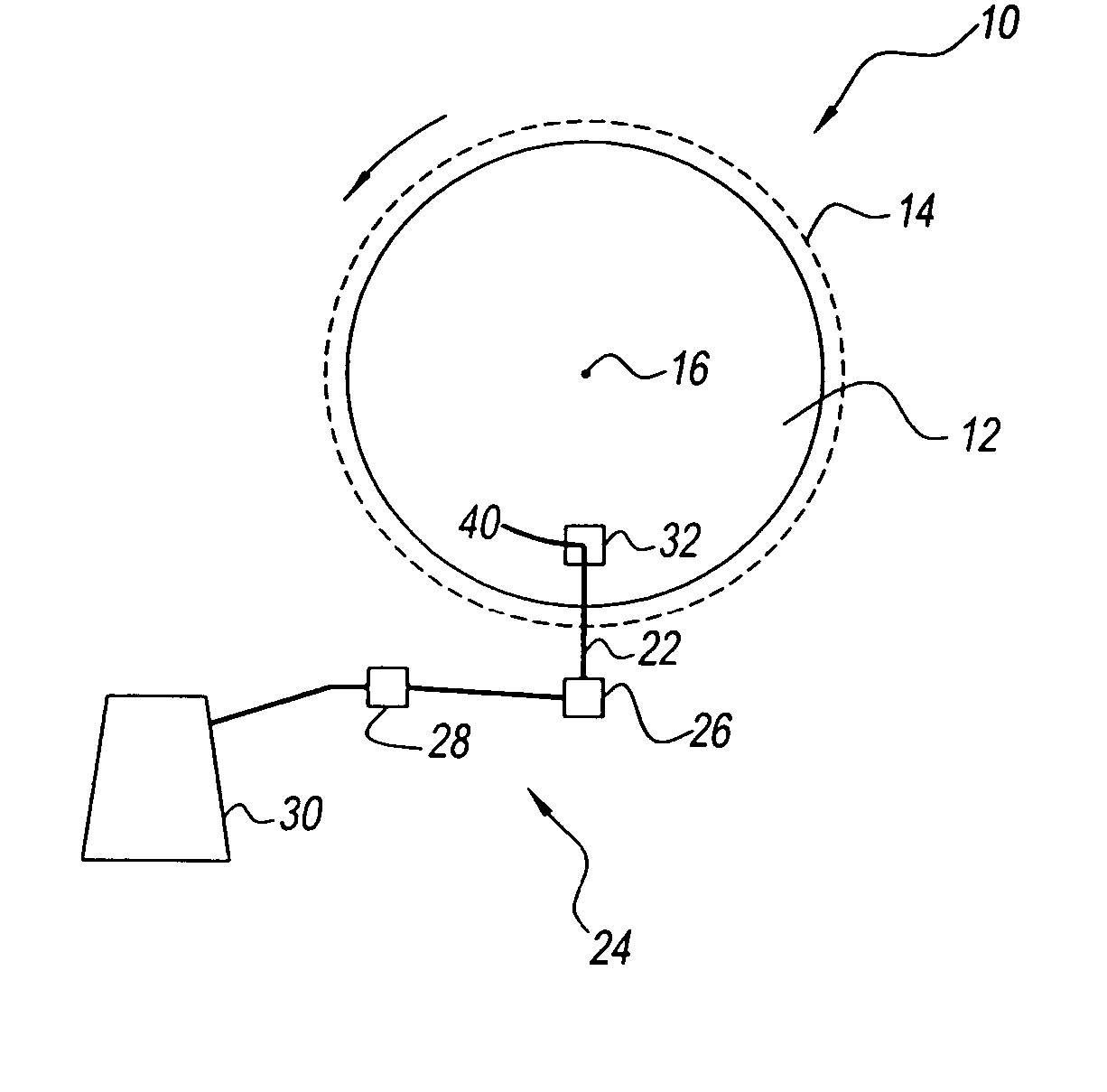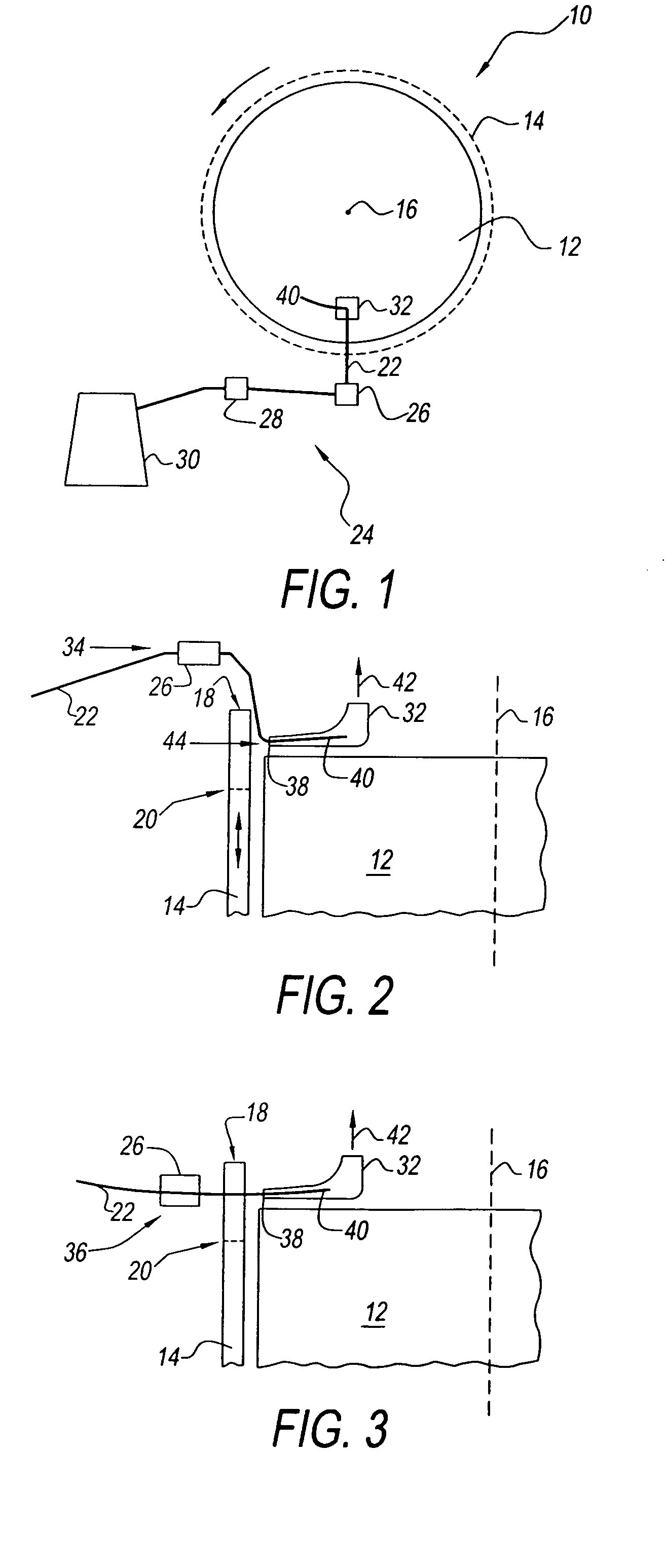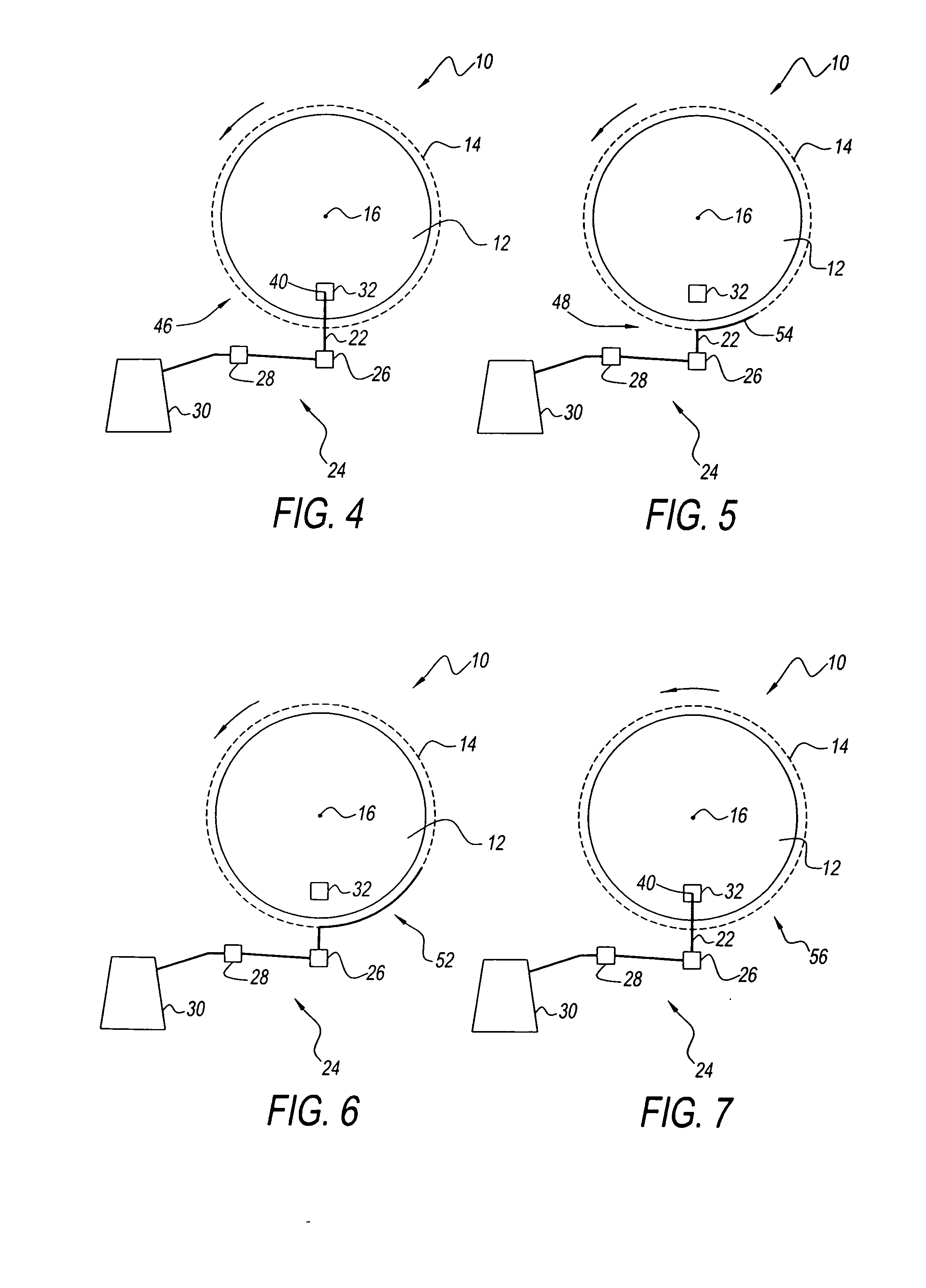Method of knitting an elastomeric yarn into a circularly knitted fabric
- Summary
- Abstract
- Description
- Claims
- Application Information
AI Technical Summary
Benefits of technology
Problems solved by technology
Method used
Image
Examples
Embodiment Construction
[0021] Referring now to the drawings and in particular to FIGS. 1 through 3, a circular knitting machine generally indicated by reference numeral 10 is illustrated. Circular knitting machine 10 has a cylinder or base 12 with a plurality of needles 14 disposed about its periphery. Machine 10 rotates needles 14 about a central axis 16 while reciprocating the needles between an upper position 18 and a lower position 20 as illustrated in phantom in FIGS. 2 and 3. Thus, machine 10 moves and reciprocates needles 14 to perform a knitting operation according to known principles.
[0022] Machine 10 can also receive one or more elastomeric yarns 22 from a feeding system 24. For purposes of clarity, machine 10 is illustrated receiving only one elastomeric yarn 22 from one feeding system 24. Of course, it is contemplated for machine 10 to have more than one feeding system, and for at least some of the feeding systems to feed more than one yarn to machine 10.
[0023] Feeding system 24 has a guide ...
PUM
| Property | Measurement | Unit |
|---|---|---|
| Pressure | aaaaa | aaaaa |
| Elastomeric | aaaaa | aaaaa |
| Feed rate | aaaaa | aaaaa |
Abstract
Description
Claims
Application Information
 Login to View More
Login to View More - R&D
- Intellectual Property
- Life Sciences
- Materials
- Tech Scout
- Unparalleled Data Quality
- Higher Quality Content
- 60% Fewer Hallucinations
Browse by: Latest US Patents, China's latest patents, Technical Efficacy Thesaurus, Application Domain, Technology Topic, Popular Technical Reports.
© 2025 PatSnap. All rights reserved.Legal|Privacy policy|Modern Slavery Act Transparency Statement|Sitemap|About US| Contact US: help@patsnap.com



